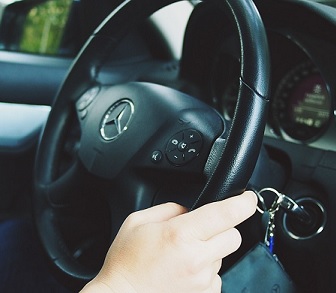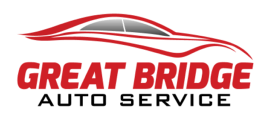 Good handling and smooth ride. These are characteristics we take for granted our vehicle will deliver every time we get behind the wheel. There’s not a one of us who would walk on a car lot and ask the salesperson for the vehicle that rides road bumps like moon craters with steering so stiff you’d need the biceps of Arnold Schwarzenegger to turn the wheel. Your steering and suspension are crucial systems that are easy to overlook until they are not working properly.
Good handling and smooth ride. These are characteristics we take for granted our vehicle will deliver every time we get behind the wheel. There’s not a one of us who would walk on a car lot and ask the salesperson for the vehicle that rides road bumps like moon craters with steering so stiff you’d need the biceps of Arnold Schwarzenegger to turn the wheel. Your steering and suspension are crucial systems that are easy to overlook until they are not working properly.
WHAT ARE THE JOBS OF STEERING AND SUSPENSION SYSTEMS?
1. Transfer the movement of the steering wheel to the tires
2. Provide “road feel” and riding comfort
3. Keep wheels in contact with the road
WHAT ARE THE TWO TYPES OF STEERING SYSTEMS?
1. Rack and pinion: This system is the most common. It takes the circular movement of the steering wheel and changes it to a linear movement so the wheels can turn.
System Advantages:
- Easier to turn wheel
- Better steering response and “feel”
- Easier to fix when broken
System Disadvantages:
- More apt to leak
- May have more “road noise”
- May have vibrations in steering wheel
2. Conventional steering (parallelogram steering): This system is typically found on older model vehicles or on today’s larger cars and trucks. It has a number of grease fittings and has several parts not found in the rack and pinion system: pitman arm, relay rod and idler arm.
System Advantages:
- Wheels stay in better alignment (minimizes “toe” change)
System Disadvantages:
- More complicated system with more parts that can “wear” out
- More expensive
- Heavier
WHAT ARE THE TWO MOST COMMON SUSPENSION SYSTEMS?
Most vehicles have independent front suspension systems. There are other systems, but we’ll focus on the most common.
1. Double-wishbone suspension: Uses two wishbone shaped control arms to hold the wheels to the frame. This system allows for greater wheel rotation and pivoting.
Advantages:
- Great camber control to provide excellent “handling
- Steering and wheel alignments are more stable
Disadvantages:
- Takes up more space
- Heavy
- Expensive and complex system to repair
2. MacPherson suspension: Combines the shock absorber and coil spring into one unit and has no control arm. The upper strut mounts hold the wheel in place.
Advantages:
- Compact to provide more passenger compartment space
- Inexpensive
- Lightweight so vehicle can accelerate more quickly
- More comfortable ride with less vibration
Disadvantages:
- Average handling
WHAT BASIC PARTS MAKE UP STEERING AND SUSPENSION SYSTEMS?
1. Steering linkage: Connects the steering wheel to the front wheels.
2. Tie rod ends: Located at the end of the steering rack and allows the wheels to move.
3. Ball joints: Allows wheels to move flexibly by pivoting or rotating as they come in contact with various surfaces.
4. Springs: Absorbs energy from dips in the road to provide a cushioning effect.
5. Shocks and struts: Help control the energy transferred to the springs to eliminate the “bounce effect” and provide a smoother ride.
6. Stabilizer bars (anti-sway bars): Provides stability and reduces sway as a vehicle leans to round corners.
WHAT ARE SIGNS OF STEERING PROBLEMS?
1. Vehicle pulls to one side when driving.
2. Steering feels like it is slipping.
3. Steering wheel is hard to turn.
4. Steering wheel vibrates.
5. Vehicle makes screeching sounds when turning steering wheel.
WHAT ARE SIGNS OF SUSPENSION PROBLEMS?
1. Wheels appear to wiggle rapidly.
2. Vehicle bounces when going over bumps.
3. Vehicle pulls to one side when driving.
4. Vehicle makes clunking noises when going over bumps.
